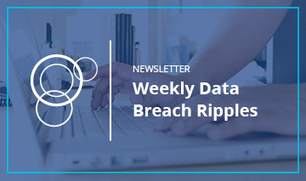
In this week's recap, Gemalto releases 2015 Breach Level Index findings, the Atlanta FRB makes 2016 payments predictions, Merchant Link lets us in on EMV's "dirty little secret," U.S. e-commerce sales continue to skyrocket, and Rippleshot VP of Operations Marci McCalmon hits the blog to explains what you need to know about encryption vs tokenization.
Gemalto Releases 2015 Breach Level Index FindingsThe newly released report found that 1,673 data breaches led to 707 million data records being compromised worldwide during 2015. Unsurprisingly, government and health care topped the list with the most breached records. Retail compromises were responsible for 6% of all records and 10% of total breaches last year.
Federal Reserve Bank of Atlanta Makes 2016 Payments Predictions
The Retail Payments RIsk Forum released a list of eight predictions for the payment space in 2016, and data breaches topped the list as the biggest threat to the ecosystem. They also expect the upcoming ATM EMV liability shift to decrease the total number of ATMs in the market by 10-15%. See the rest of their predictions here.
EMV penetration at POS terminals is still quite low at around 37%, and many merchants have spoken out against the high cost and labor involved in getting it implemented. But Merchant Link knows something many of us don’t - and it’s that their clients are putting a hyper focus on implementing EMV as soon as possible. Why? Chargebacks.
U.S. Retail E-Commerce Sales Continue Double-Digit Growth
According to a report from the U.S. Census Bureau, e-commerce sales in the U.S. increased 14.7% compared to the same period last year. Total retail sales for the same time period grew only 1.3 percent year-over-year, meaning e-commerce transactions are continuing to take a larger share of the retail pie. This also continues to raise concerns about card not present fraud and how much impact EMV will actually have on fraud overall.
Rippleshot Content: Encryption vs Tokenization: What's the Difference?
For thousands of years, humans have created secret codes to protect important information from others. Military secrets, formulas to create goods like silk, and personal information are seen throughout history as being masked to communicate so unintended recipients could not read the message. There are two main ways to communicate information in secret; tokenization and encryption. The terms tokenization and encryption are often interchanged, yet they actually have very specific definitions. Let’s dig in deeper to find out more about the differences between the two.
Get our weekly recaps in your inbox as soon as they're published by signing up below:


